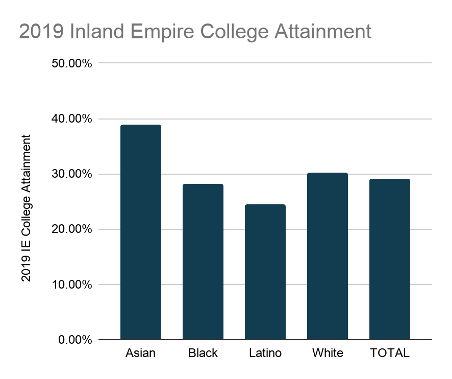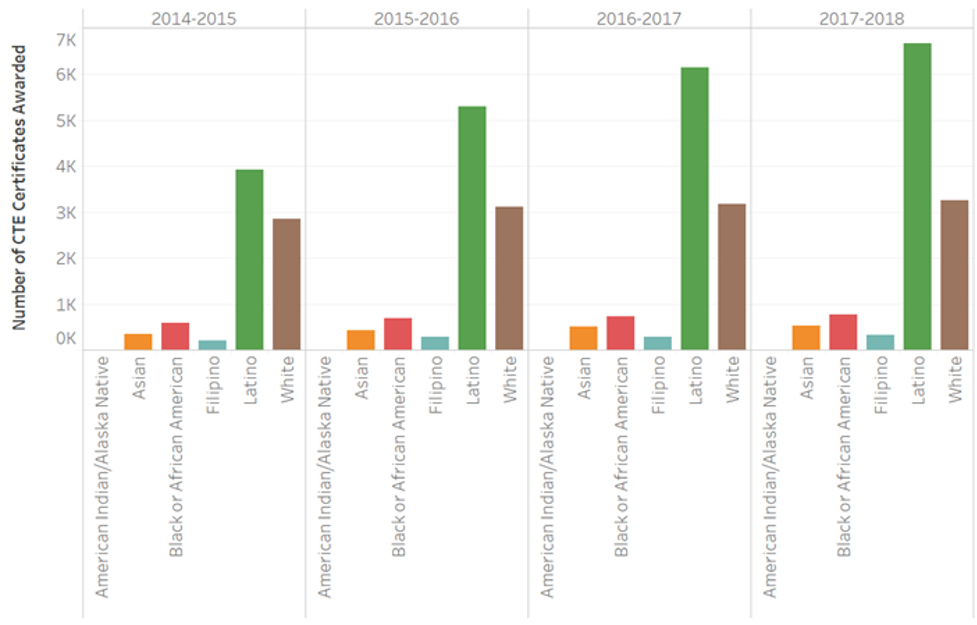
(Forest Service photo by Tania C. Parra)
Developed initially as an epicenter for citrus and other agricultural products in the 19th century, over the last half century the Inland Empire has developed as an affordable alternative to coastal Southern California.
Encompassing San Bernardino and Riverside Counties and ranging from the coastal plain to the Nevada border, the Inland Empire is home to a combined population of more than 4.6 million people.
Today the Inland Empire has 14% higher home ownership rates than the state as a whole, though the region saw declines in home ownership across all of its racial demographic groups from 2010 to 2019.
“The California Dream Index provides a powerful tool to track whether all of our states’ regions are truly rising together, learn what’s working and identify opportunities for improvement,” said Paul Granillo, CEO of the Inland Empire Economic Partnership (IEEP).
More than just an interactive tool with 10 key indicators, the California Dream Index resource portal spotlights reports that showcase important local nuances like the UCR Report on the State of Innovation and the Inland Economic Growth and Opportunity strategy reports.
The region tracked the state as a whole in recovering from the Great Recession and, as a critical logistics hub, the Inland Empire has been a focal point for trends like increased automation, supply chain changes and other transformations underway in the global economy.
These megatrends are particularly poignant for the Inland Empire given the education levels of its workforce. As of 2019, the Inland Empire has 30% fewer workers with an associates degree or higher than the state as a whole.


In 2018, the Inland Empire awarded 8.8% of the state’s career technical education (CTE) certificates, lagging the region’s 11.7% share of the state’s population. Participants at the recent California Dream Index Roadshow hosted by IEEP also emphasized the importance of ensuring that CTE education is aligned with the needs of employers.
That includes both better alignment of what students learn in school, more apprenticeship opportunities for recent graduates, and also achieving universal broadband access to bridge the digital divide. The chart below shows the Inland Empire’s CTE certificates awarded by race and ethnicity over time.

These educational challenges begin early. The Inland Empire has 17% fewer of the regions three and four years olds enrolled in preschool than the statewide average.
Looking towards the future, many participants at the California Dream Index roadshow spoke highly of the recent Inland Empire Growth and Opportunity (IEGO) process, which among other strengths, provides value by bringing together civic leaders across county lines.
The strategies resulting from that process emphasized the importance of diversifying the region’s economic base by building from its strength in logistics and manufacturing specialties. In addition, the region can improve how it trains and critically retains skilled workers attaining a college degree or CTE education.
As Carlos Ayala from Growing Inland Achievement eloquently put it during the roadshow, “when we are able to identify and give students in our community colleges, high schools and post-secondary institutions the right kind of knowledge and skills, we can get them good paying jobs in the Inland Empire.”
With smart strategies and sustained effort, the Inland Empire has tremendous potential to grow and develop as a “region on the rise.”

